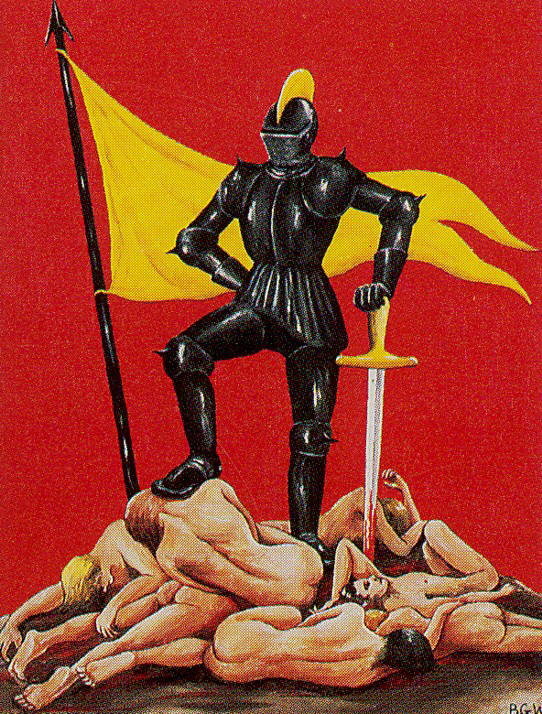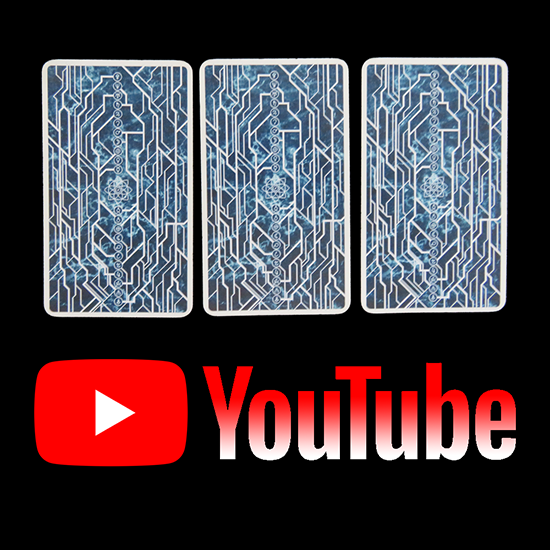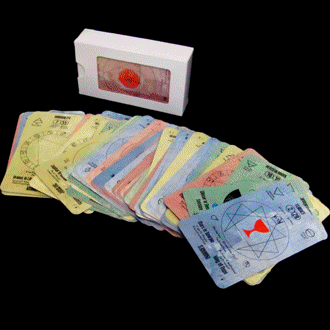This deck is a mixture of the old and the new. Walker has studied Women’s History and Mythology extensively and incorporates them into her deck, particularly in the Minor Arcana. The Majors are fairly standard and traditional in design.
Justice is number 8 and Strength number 11. Some changes to the symbolism have been made as well. The addition of a butterfly to The Fool, two white columns in The Papess (they are lettered Alpha and Omega), the All-seeing Eye in Justice, and the snakes on the Hermit’s staff are among those one notices immediately. In other cards Walker has restored the traditional imagery of the Marseilles. The Sun shows two children in front of a low fence, The High Priestess and The Hierophant have been named the Papess and Pope and The Tower has been named The House of God.
The Minor Arcana are where Walker made some significant changes, primarily in the imagery. Various Gods and Goddesses from many different religions, along with characters from myths populate her Minors and Court Cards. The Minors have a one word interpretation on top and the card name and number written on the bottom. Some of Walker’s interpretations are very traditional, while some are not. The imagery is far removed from the Waite-Smith scenes we are familiar with. The Ace of Cups for example, shows a Mermaid sitting on a rock drinking from a cup. She is the Goddess Minne, whose name allegedly means Love. The one word interpretation is Love. The 6 of Cups, shows a Giant figure towering over a small naked child sitting between 6 cups. This card has the interpretation Childhood. The Court Cards have the name of the God/Goddess, Creature or Person illustrated on the top and the name and number of the card on the bottom. The Court consists of Princess, Prince, Queen and King. The booklet that accompanies this deck was written by Walker herself and starts off with a brief history of the cards. Walker unfortunately seems to find conspiracies to suppress Goddess worship everywhere. Statements such as “Prevalence of female figures in the Tarot suggests ongoing secret worship of the once-supreme Great Goddess whose rites churchman particularly condemned, labeling them witchcraft. Hence the clergy’s dislike of cards, and the Tarot’s perpetual air of mystery.” detract from Walker’s scholarship. There is a book written by Walker for this deck as well called: The Secrets of the Tarot: Origins, History and Symbolism. It describes Walkers symbolism in much more detail, and explains the Gods, Goddesses, and Myths used in her deck. Walker is a staunch feminist and misses few opportunities to link whatever she is discussing back to the suppression of female spirituality. Take her with a grain of salt, particularly when she provides no supporting evidence for her theories. Her knowledge of mythology and symbolism is impressive however, even though she often twists things to suit her own purposes.
While the deck is very Pagan in feel, drawing on pantheons from around the world, there is little to hold the images together as a unified whole. I would recommend this deck primarily for collectors. Walker’s symbolism and interpretations are fairly idiosyncratic and require some study. Those interested in World religions and mythologies might also find this deck interesting, though Walker’s theories are often at odds with other authorities in these fields. (Source: tarotpassages.com)
The Barbara Walker Tarot depicts goddesses and gods from mythology all over the world. Positive, negative and in-between deities are all shown, creating a complex deck which can seem a little disturbing to those unfamiliar with the myths.
Name: Barbara Walker’s Tarot
Creators: Barbara Walker
Publisher: US Games 1986
Deck Type: Tarot Deck
Cards: 78
















